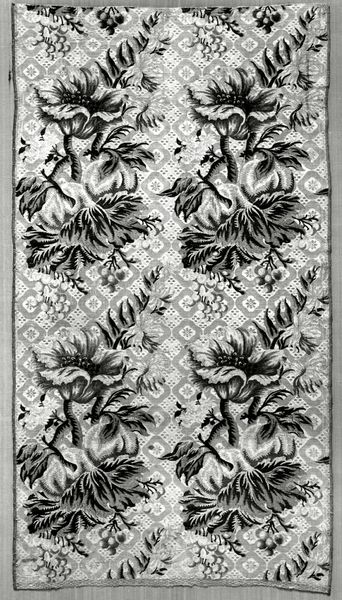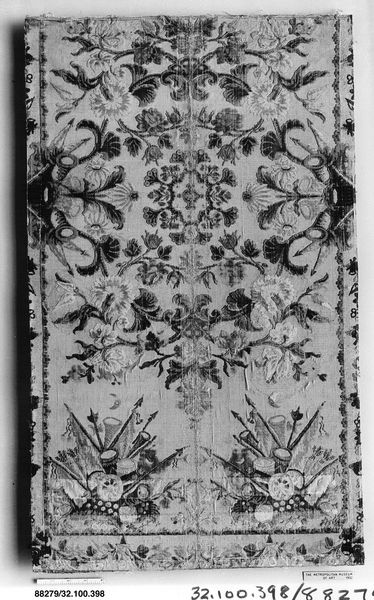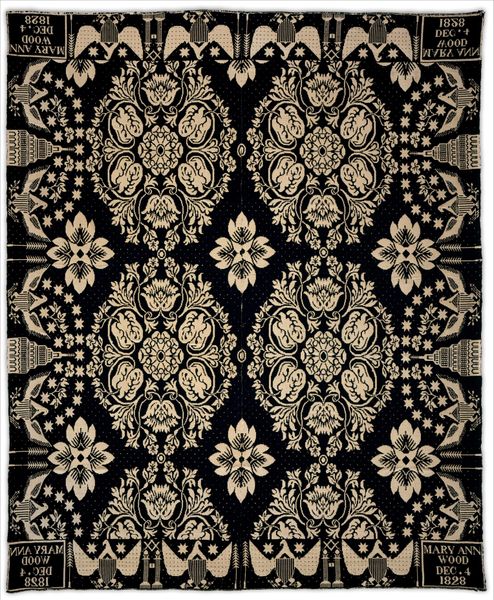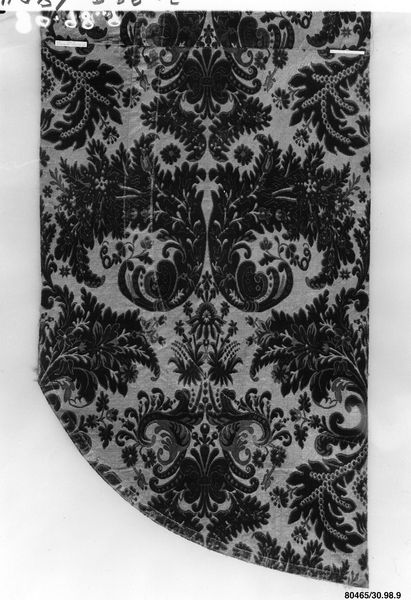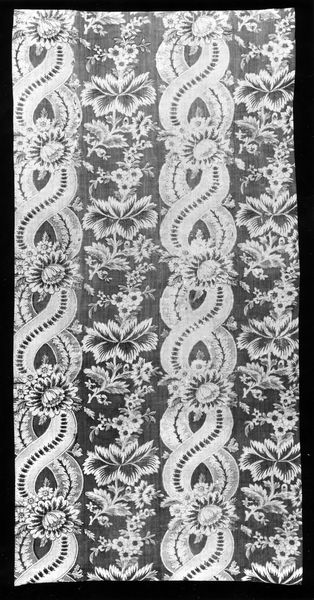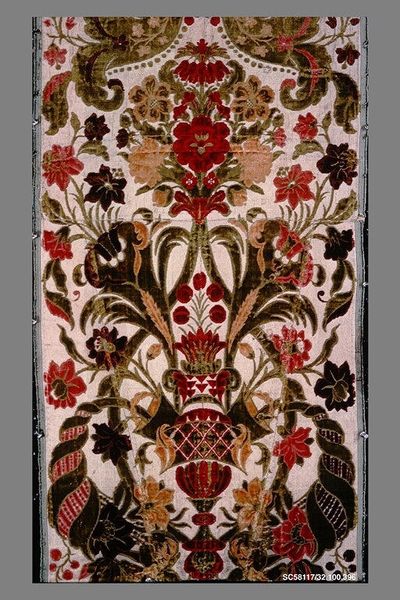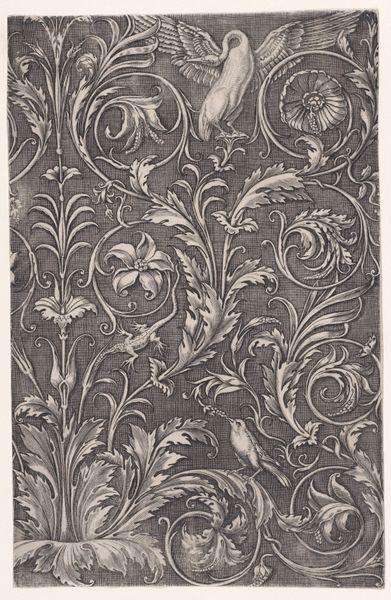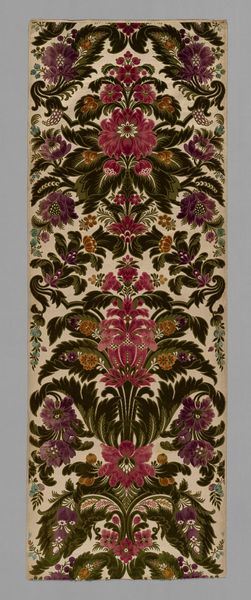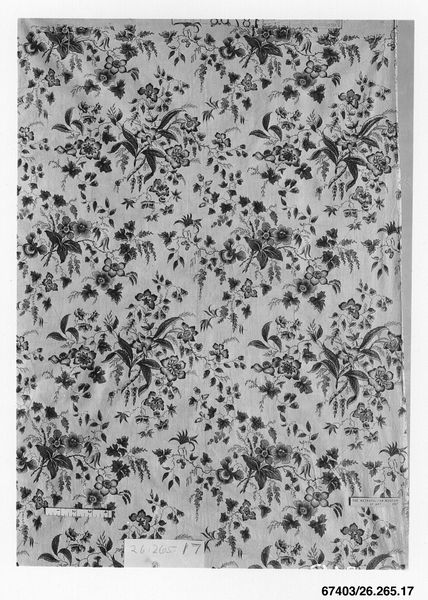
weaving, textile, sculpture
#
baroque
#
pattern
#
weaving
#
textile
#
flower
#
sculpture
#
decorative-art
Dimensions: L. 27 x W. 20 7/8 inches (68.6 x 53.0 cm)
Copyright: Public Domain
Editor: This textile "Piece," created between 1716 and 1719 and currently residing at the Met, presents a captivating floral pattern. It feels quite formal and imposing. How do you interpret this work? Curator: The formality you observe likely stems from the Baroque period's love of symmetry and ornamentation. Look closely – what do these flowers and swirling patterns evoke for you? Does the repeating motif hold a deeper cultural resonance? Editor: Well, I see repetition and rhythm. Is it just meant to be beautiful or does the symbolism point to a deeper meaning in the 18th century? Curator: Floral motifs, especially during the Baroque, weren't merely decorative. Flowers, like certain colors or mythical creatures, functioned as allegories for social status, moral virtues, and sometimes even hidden political messages. The question is, can we unlock the meanings of *these* specific flowers through the symbolic language of the era? Also, consider what function textiles served at the time: what purpose was this designed for, and for whom? Editor: That's fascinating! It completely shifts my understanding. So, decoding these symbols might give us a glimpse into the values and beliefs of that time. Curator: Precisely. And further reveal what aspects of the past the Baroque artist and patron wanted to keep alive in the cultural memory through daily interaction. A tapestry, in its own way, is a script awaiting interpretation. Editor: I see how analyzing the symbols within such works opens a rich historical conversation, not just aesthetic admiration. Curator: Indeed. Each careful design choice reveals echoes of past values in an object made new.
Comments
No comments
Be the first to comment and join the conversation on the ultimate creative platform.


